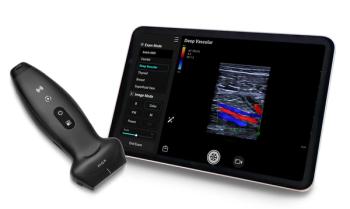
When a well visit includes other care; measuring lesions when coding for excisions; defining hospital admission date; providing office, hospital care on same day
This column addresses well visits that are combined with other services, coding for excisions and lesions, and providing hospital and office care on the same day.
Key Points
Q: I have practiced family medicine for more than 40 years. I never have added code 99213-25 to code 99391 (routine infant or child health check) for routine physical exams using diagnosis code V202. My new, young associate does this all the time. Am I losing reimbursement by not doing so?
When a patient presents for preventive care and has a medical problem requiring treatment significant enough for a separate E/M service, the documentation for the well visit may not be used as documentation for the E/M service. Separate documentation must substantiate the E/M service. Therefore, the visit normally would be considered a low-level visit, such as what would be coded 99212, unless the problem the patient presents with is significant. If the patient presents with a significant medical problem, however, then the well visit typically is postponed until the child recovers from the medical problem.
MEASURING LESIONS WHEN CODING FOR EXCISIONS
Q: We excise a fair number of benign and malignant lesions in our practice. In each case, we wait to bill the service until the pathology report returns, using both the diagnosis and measurements documented on that report. I recently attended a meeting where it was suggested that when coding for the excision service, the lesion measurement should include the excised margins. Is that correct?
A: When coding for the excision of a benign or malignant lesion, the measurements should include not only the diameter of the lesion but also the margin required for complete excision. Your record should contain the information elicited at the time of the excision, not the diameter reported in the pathology report. It is prudent to wait for the pathology report when determining the diagnosis if the diagnosis is in question, however.
DEFINING HOSPITAL ADMISSION DATE
Q: I am confused by the definition of hospital admission date. The CPT book indicates that the date should be "the first hospital inpatient encounter with the patient by the admitting physician." Some insurers, however, reject claims if the hospital admission encounter is not the same date as when the patient was admitted. Many times, we call in orders if the patient is seen in the ER and subsequently is admitted without actually having seen the patient on the date of admission. Which definition is correct?
A: At the risk of sounding evasive, both definitions are correct. When billing a service to a third-party insurer, however, you must follow the insurer's guidelines to be paid for the service you provide.
PROVIDING OFFICE, HOSPITAL CARE ON SAME DAY
Q: When a patient's office visit to one of our group's outpatient (non-admitting) physicians culminates in same-day hospitalization by our group's inpatient manager, how can both physicians obtain payment for their services to the patient?
A: When two providers employed by the same group practice see a patient on the same date of service-one in an office setting, and the other as the admitting provider-and the services provided to the patient in the office result in the hospital admission, then all services rendered during the course of the two encounters are combined and billed by either provider. Unless there are extenuating circumstances, two E/M services cannot be rendered to the same patient for the same reason on the same date of service by the same provider (in this case the same group).
The author is president of Healthcare Consulting Associates of NW Ohio Inc., Waterville, and a Medical Economics editorial consultant. She has more than 30 years of experience as a practice management consultant and also is a certified coding specialist, certified compliance officer, and certified medical assistant.
Newsletter
Stay informed and empowered with Medical Economics enewsletter, delivering expert insights, financial strategies, practice management tips and technology trends — tailored for today’s physicians.


















